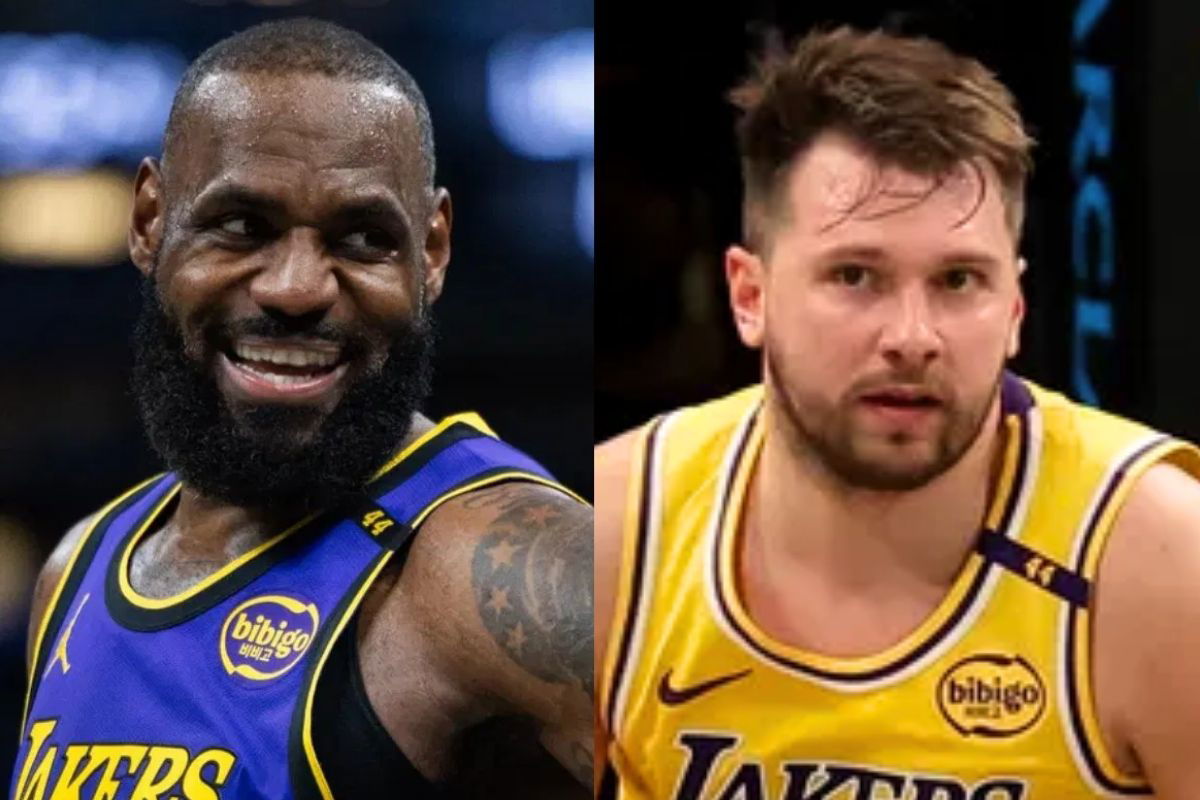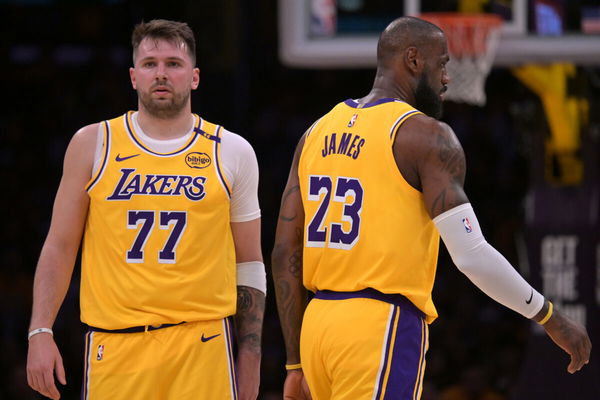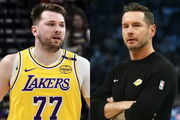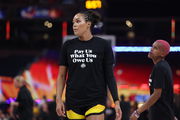
Imago
Credit: IMAGN IMAGES

Imago
Credit: IMAGN IMAGES
LeBron James is entering what is a record-breaking 23rd season of his career. Right from when he first broke through the league, to now, when he is 40 and rushing towards the twilight of his career, the scrutiny has been consistently immense. From being branded as the “chosen one” to being knocked for comparisons to Michael Jordan despite a 4-6 Finals record, even the mundane aspects of James’ persona are closely scrutinized.
Watch What’s Trending Now!
And this time, a particular issue that has been highlighted not only puts a question mark over his own shooting ability, but also risks hurting his teammates. Recent tracking data suggests that one of LeBron’s strengths, wide-open scoring, may not be as reliable as fans assume, or what his healthy 51.3% efficiency last season suggests.
Digging deeper, HoopsHype found a stinging flaw in James’ game. While he is in the top 10 percentile all time when it comes to overall shooting, LeBron converts just half of his “wide open” shots.
ADVERTISEMENT
“Using NBA tracking data, we can look at shooting percentage on ‘wide open’ shots, when the closest defender is over 6 feet away. For some players, the extra time and space takes them out of their rhythm and makes what should be an easier shot, a more challenging one. That seems to be the case for LeBron. He makes just over half of these wide-open twos, amongst the lowest rates in the league. Interestingly, Steph Curry, aka the best shooter of all time, is also down here, making exactly half of his 24 wide open twos last season.”
The data suggests that LeBron is in Curry’s category, in the sense that some players, when given extra time and space to take a shot, end up finding it more challenging to convert. This suggests that when James is given a wide open shot when the nearest defender is at least six feet away, he only makes them slightly more than half the time.
The fact that he finds himself in the list alongside Curry is especially mind-boggling. After all, these are two of the greatest players/scorers the NBA has ever seen. However, this nuance has broader implications for James’ teammates as well. Players like Luka Doncic and other teammates depend on LeBron as a secondary floor spacer and reliable scorer. Missed opportunities in expected spots could disrupt spacing, reduce team efficiency, and force others into more contested shots. The ripple effect of these numbers could be more significant than a single missed shot.
ADVERTISEMENT
It isn’t a knock on LeBron’s all-time greatness; he is the highest scorer of all time, but this subtle vulnerability is something that teams need to account for, especially when constructing plays around him and managing rotations. Further, it exposes the likes of Luka Doncic and company to an obvious problem, as the Lakers are likely to rely even more on James next season as a secondary scorer.
ADVERTISEMENT
LeBron’s impact on Doncic and team spacing
LeBron James’s inconsistency on wide-open shots doesn’t just affect his scoring: it impacts his teammates like Luka Doncic as well. Wide-open shots, where defenders are six feet or more away, are expected to stretch defenses and create easy scoring chances. Missing a significant portion of these opportunities can compress the floor, forcing Doncic and other perimeter players into tougher, contested shots and reducing the spacing that the Lakers rely on in pick-and-roll and transition situations.

Imago
Feb 10, 2025; Los Angeles, California, USA; Los Angeles Lakers guard Luka Doncic (77) and forward LeBron James (23) on the court in the first half against the Utah Jazz at Crypto.com Arena. Mandatory Credit: Jayne Kamin-Oncea-Imagn Images
In 2024-25, Doncic posted an effective field goal percentage of 53.6%, slightly below the league average of 54.3%. Any reduction in open looks caused by teammates like LeBron missing wide-open shots increase pressure on his teammates. Even top scorers can create ripple effects when underperforming in these areas. Defensive rotations can tighten around Doncic and exploit the fact that LeBron fails to convert expected open opportunities, particularly during clutch sequences.
ADVERTISEMENT
Coaches and teammates must account for these patterns by emphasizing off-ball movement, floor spacing, and timing in offensive sets. Adjusting the positioning of secondary players and orchestrating smarter rotations can mitigate the impact of LeBron’s occasional misses. While subtle, this weakness could influence play design and the efficiency of primary scorers like Doncic throughout the season.
Top Stories
Lakers Duo Close to Luka Doncic, JJ Redick Ready to Bid LA Goodbye in Depth Trades – Insider

Is Anthony Edwards Playing Tonight? Timberwolves vs Thunder Latest Injury Report (Dec 19)

Did Zion Williamson Slide Into Sydney Sweeney’s DMs? Fact Checking the Viral Screenshot

DiJonai Carrington Publicly Criticizes WNBA’s ‘Greedy’ CBA Approach While Addressing League’s Unrivaled Stance

WNBA Responds to WNBPA Strike Authorization Vote With Official Statement

ADVERTISEMENT
ADVERTISEMENT
ADVERTISEMENT

